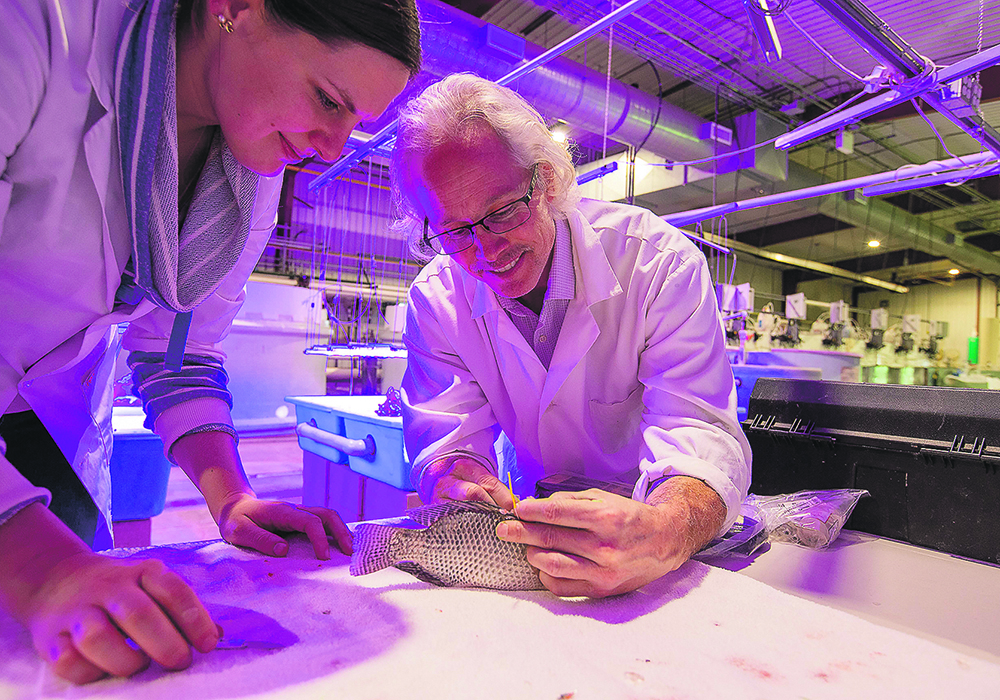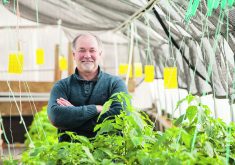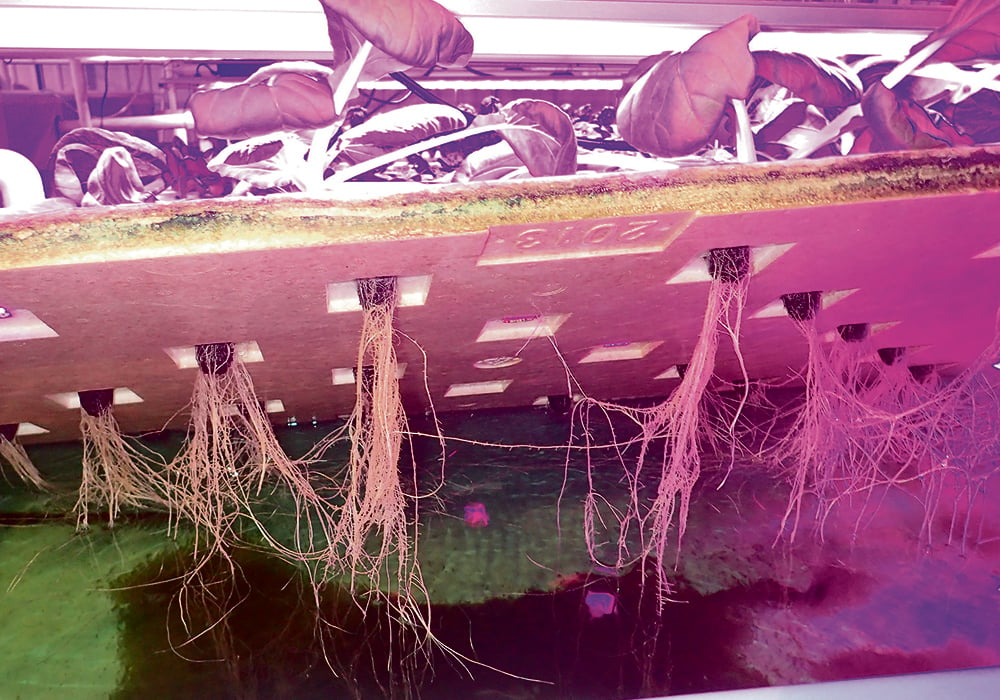Aquaculture can run from the extremely basic to sophisticated. John Derksen at the Aquaculture Centre of Excellence in Lethbridge said farmers who stock rainbow trout into a slough or lake on their property are not quite there, but add aeration, feeding, more fish and a harvesting plan and you have a basic aquaculture operation.
A step up from this is net pen aquaculture, where higher numbers of fish are enclosed and fed in pens in either salt or freshwater, with nature taking care of the fish waste.
Then there are recirculation aquaculture systems (RAS), where fish are kept in large tanks and fed a high-quality diet to produce the greatest gain in the shortest amount of time. Sophisticated water treatment ensures conditions are always optimal and the fish are never exposed to diseases or parasites.

Add hydroponic crops and you have aquaponics, a system where the plants are nourished by the nutrients from the fish waste, mimicking what happens in nature.
“Aquaponics is as productive or more productive than hydroponics,” Derksen said.















